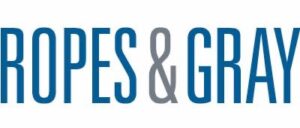PDURS: What Four Top Law Firms Are Saying
Reaction from powerhouse lawyers about PDURS
The FDA’s draft guidelines for Prescription Drug Use Related Software (PDURS) have drawn significant attention from the legal community. Law firms and legal experts have provided detailed analyses and comments, focusing on the potential implications for pharmaceutical companies and digital health innovators. Here is a summary of five notable responses from law firms or lawyers regarding the PDURS guidelines:
Foley Hoag LLP
Foley Hoag LLP commended the FDA for its efforts to address the regulation of software associated with prescription drugs. However, they raised concerns about the broad definition of “prescription drug labeling,” which could encompass a wide range of software outputs, potentially leading to increased regulatory burdens:
While the differentiation between “FDA-required” and “promotional” labeling appears for the first time in this draft guidance document, the dichotomy leaves many open questions that the draft guidance does not address. For instance – would a drug or sponsor logo alone transform what would traditionally be considered “FDA-required” labeling into “promotional” labeling?
Foley Hoag’s Bryant Godfrey, Tina Papagiannopoulos, and Matthew Piscitelli have more about PDURS here.
Ropes & Gray LLP
Ropes & Gray notes that the draft guidelines from the FDA provide “some important clarity” but suggests additional clarity is needed in at least four areas:
- How FDA will regulate software with multiple functions, some of which are PDURS and some of which may not be PDURS;
- Disease-awareness functions of software that also includes PDURS software functions;
- What is conidered the appropriate balancing of benefit and risk information when PDURS output includes a benefit claim about the drug;
- Detailed implications for generic and biosimilar products where the branded product has a PDURS described in the PI.
More from Ropes & Gray on PDURS here.
 Arnall Golden Gregory LLP
Arnall Golden Gregory LLP
AGG observes that although the PDURS focuses on drug use-related software functions and end-user output, the “FDA makes clear that, in some cases, software functions may be “devices” subject to medical device regulation.”
More on PDURS from AGG here.
Gibson Dunn
Upon analyzing the draft guidance, Gibson Dunn’s commentary noted that interested parties should![]() consider whether FDA’s proposed framework and review processes, particularly for PDURS described in the FDA-approved labeling, could impact their ability to timely develop and update software to help patients who use their products.
consider whether FDA’s proposed framework and review processes, particularly for PDURS described in the FDA-approved labeling, could impact their ability to timely develop and update software to help patients who use their products.
Also, they advise parties to “consider potential enforcement and compliance risks and costs that would stem from implementation of the PDURS Draft Guidance, including expansion of possible off-label promotion liability.”
More about PDURS from Gibson Dunn here.
Summary
The responses from these law firms highlight a range of concerns and recommendations regarding the FDA’s draft guidelines for PDURS. Common themes include the need for clearer definitions, more specific guidance, and a balanced approach to regulation that accommodates the unique nature of digital health technologies.
